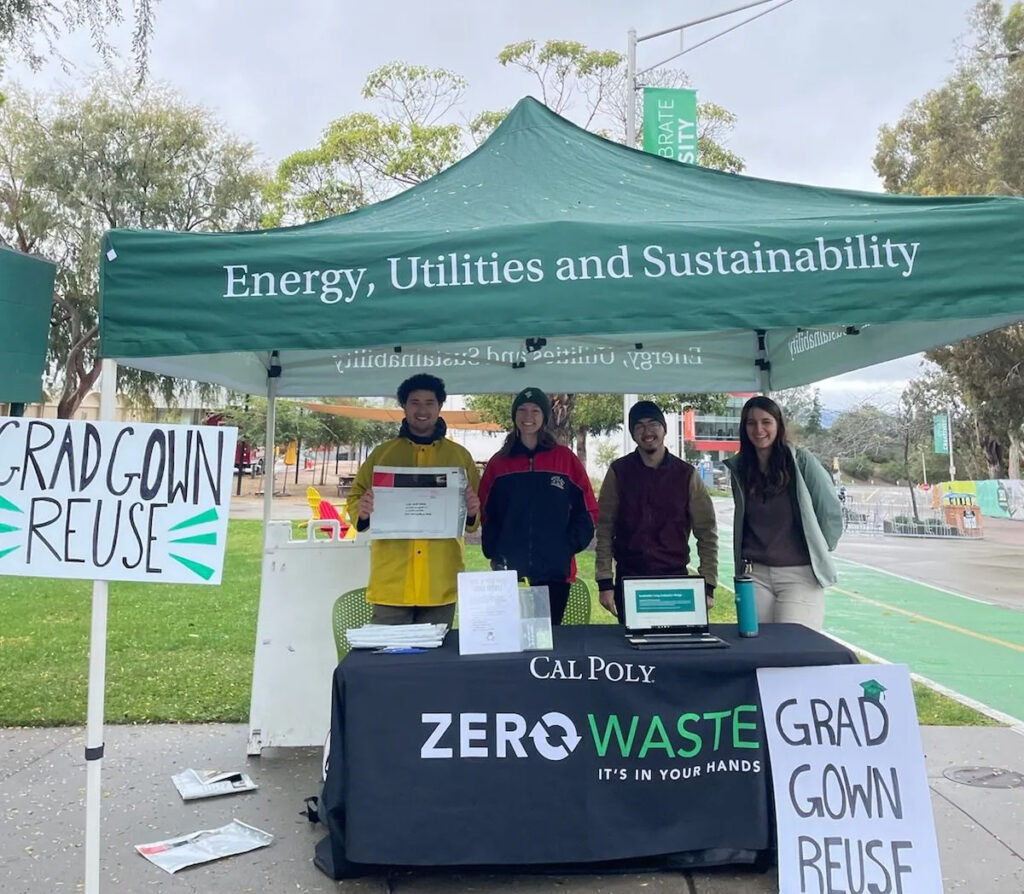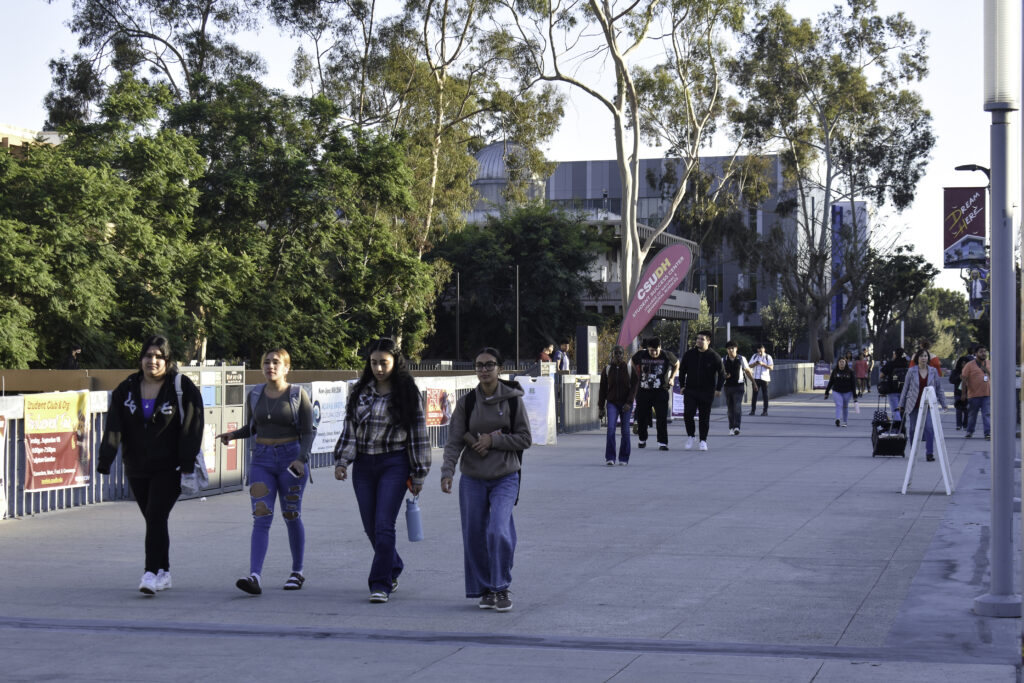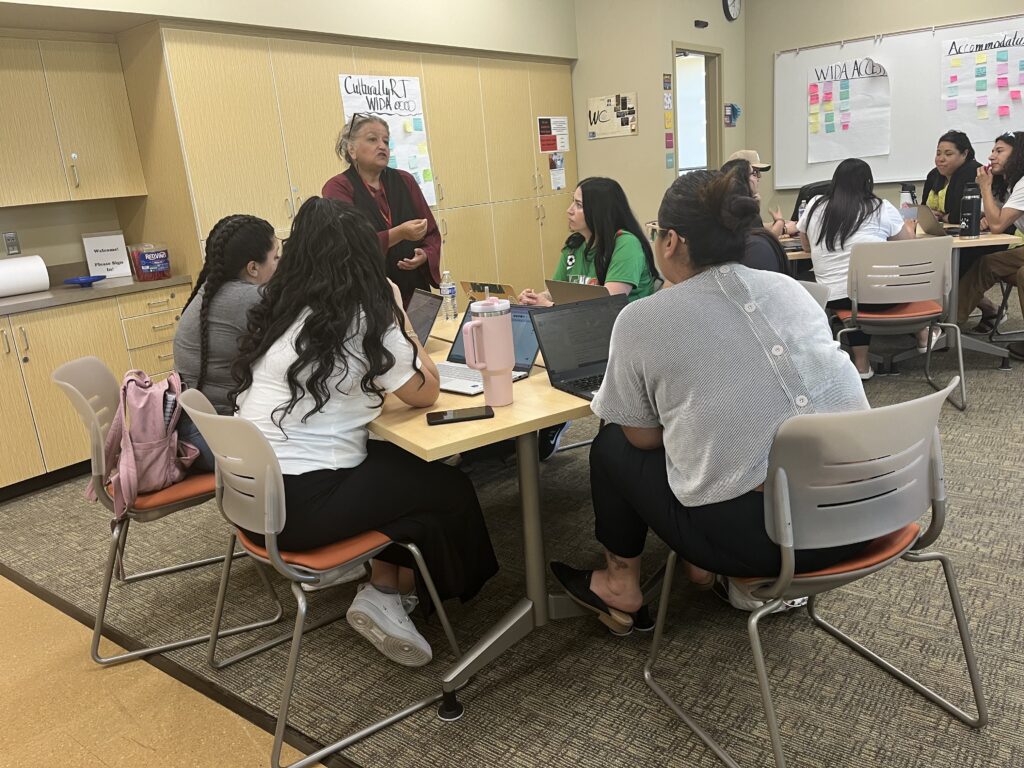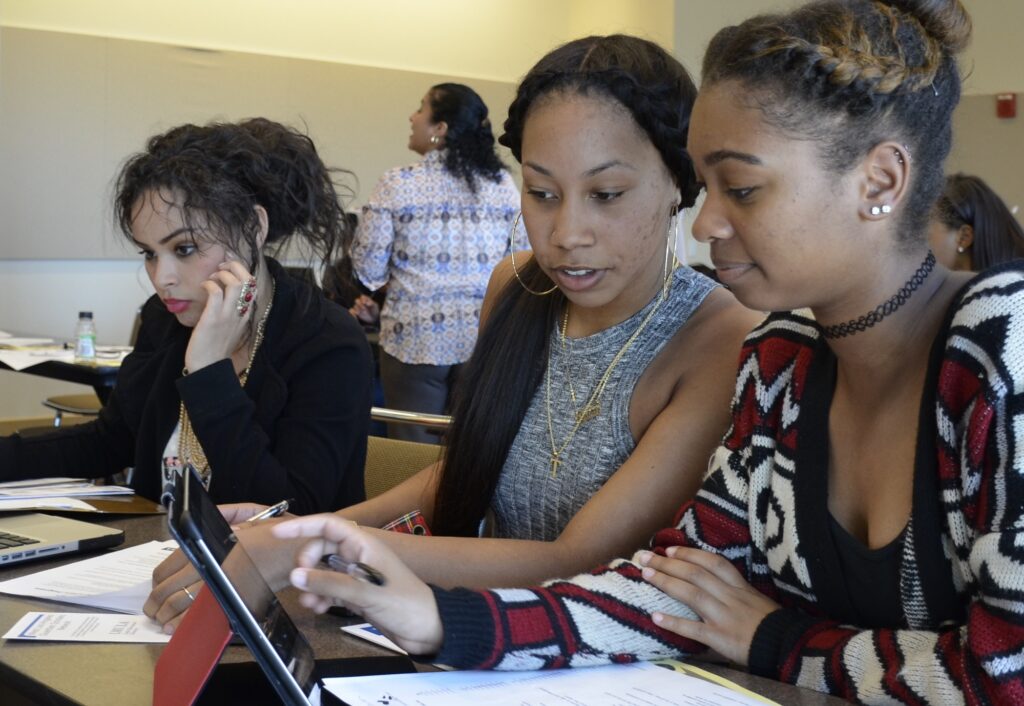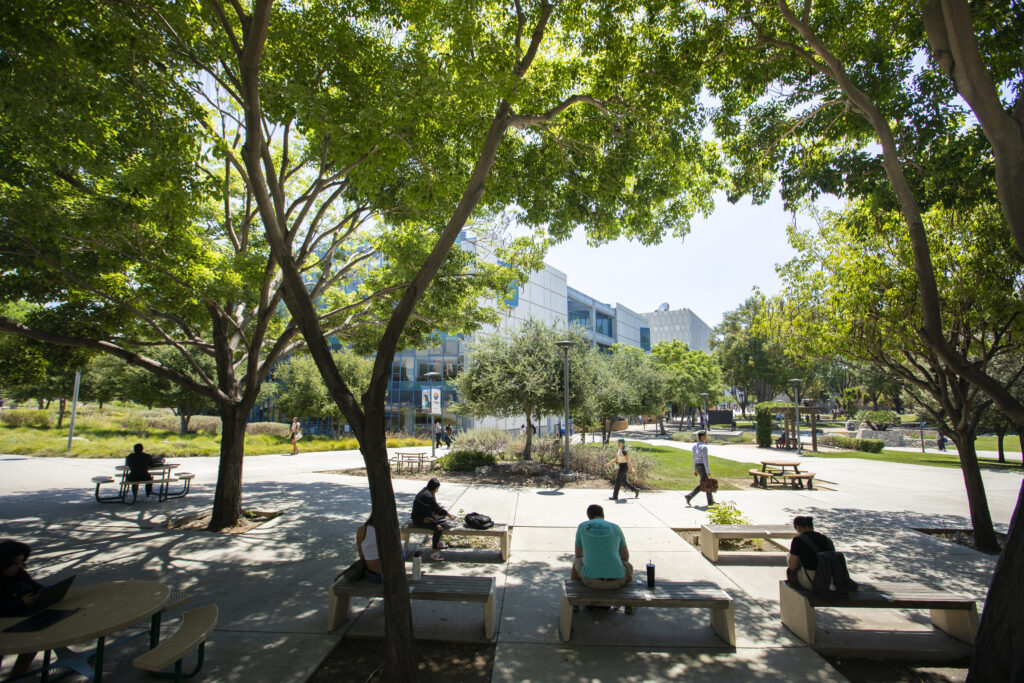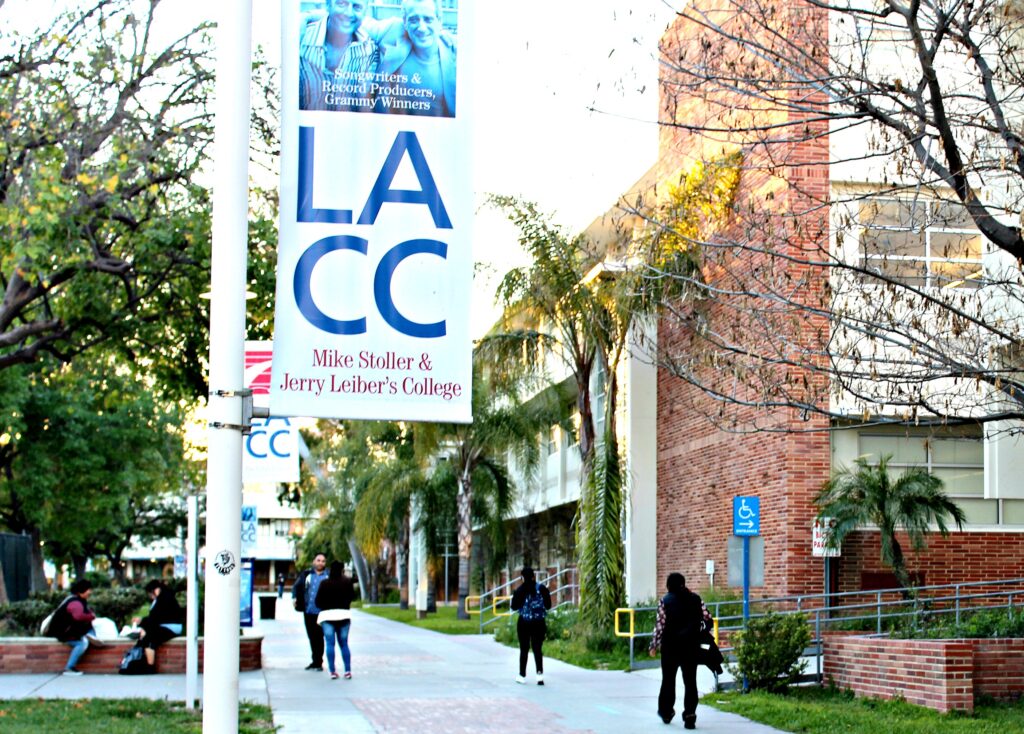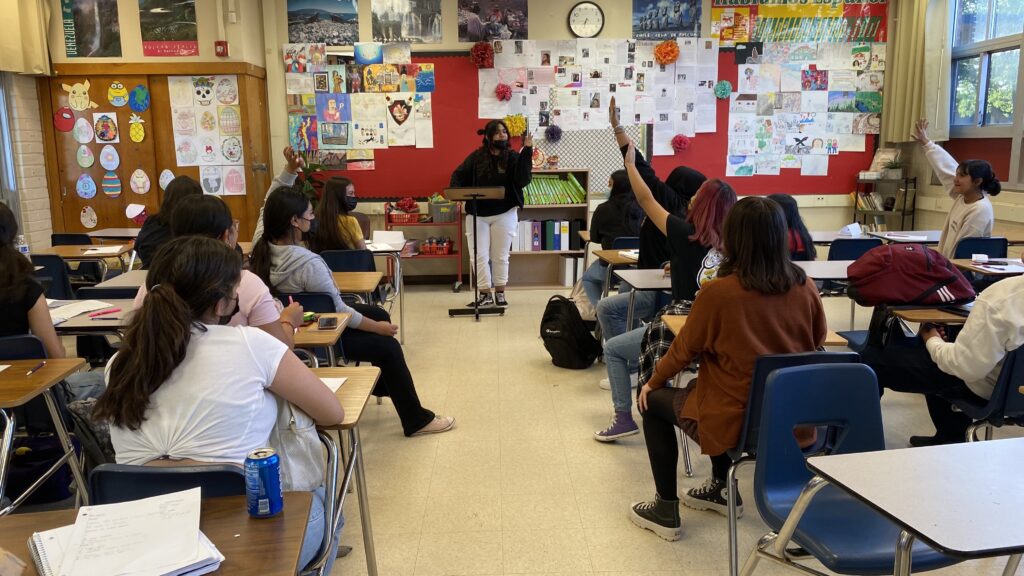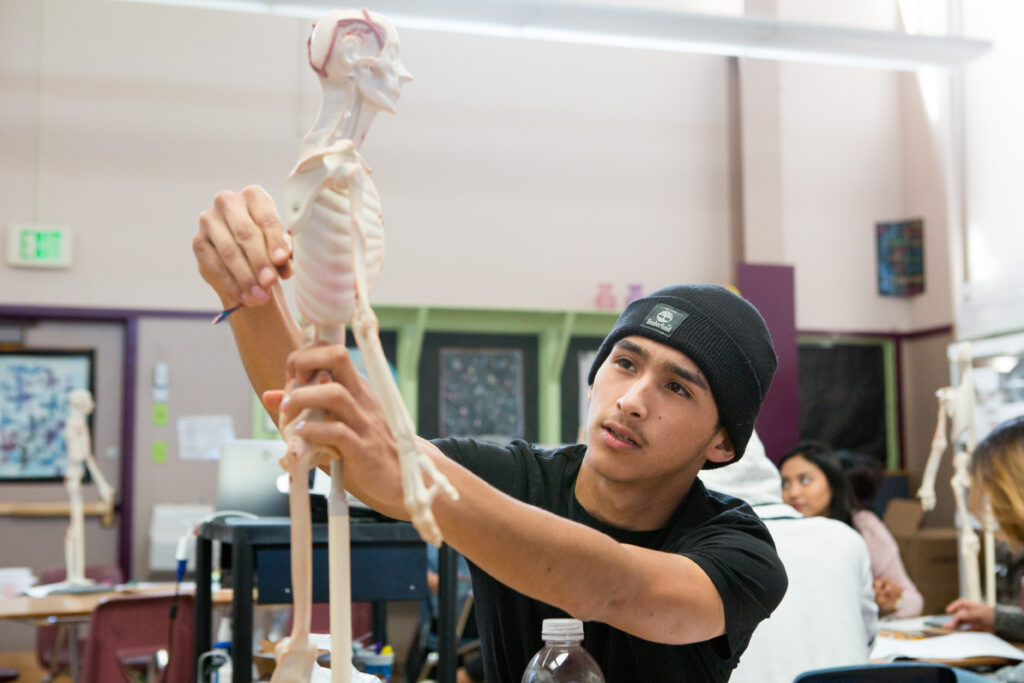
As California expands services needed to grow the number of foster youth enrolling in college, more work is needed to help those students graduate.
Julie Leopo/ EdSource
Foster youth are seldom top-of-mind in efforts to promote broader college access, but many would aspire to attend and have the skills to thrive there, argues Royel M. Johnson, a tenured professor in the Rossier School of Education at the University of Southern California, in his forthcoming book.
The book, “From Foster Care to College: Navigating Educational Challenges and Creating Possibilities,” features the stories of 49 current and former foster youth nationwide who have enrolled in college, often by relying on the skills they gained while navigating the foster system.
The idea for the book developed when Johnson was a professor at Penn State University, where his research largely focused on youth impacted by the foster care and criminal legal systems.

“I’d been building an area of work, a program of research around system-impacted populations who are not always thought of as college material, and not always even just centered in national efforts to promote college access and post-secondary success,” he said in a recent interview.
Johnson was raised on the west side of Chicago in the Garfield Park neighborhood. It is a predominantly Black community with a decadeslong history of disinvestment that has resulted in high unemployment and shorter life expectancy rates.
“By way of that, you get exposed quite early to systemic inequities, whether it be policing, child welfare policies, education,” he said. “My own lived experience became the lens through which I developed my curiosity for research and trying to understand better the pathway and structural disadvantages and opportunities that some folks have and other folks do not.”
While studying political science at the University of Illinois Urbana-Champaign, Johnson met and studied alongside graduate students enrolled in the university’s doctoral program for educational policy.
They inspired him to remain at the university to pursue educational policy. He earned a master’s degree in the subject there and, ultimately, a doctorate in higher education and student affairs from Ohio State University.
Johnson, whose book will be published in October, recently made time to discuss how the book project came together and what he learned from the foster youth he interviewed. The following interview has been edited for clarity and brevity.
Where did the inspiration for this book come from?
Too much of the work on young folks in foster care is sort of around, ‘What explains the failure?’ We need to understand why some students don’t succeed. But there’s also a lot that we can learn from young people who do succeed, and that becomes the model we sort of move from. I wanted to do asset-based work and resiliency-based work versus deficit-oriented work.
Your book features the stories of 49 college students and graduates with experiences in the foster care system. How did you meet and interview them?
Around 2019, I launched a national study working with folks who run programs for young people in foster care at colleges and universities. We contacted administrators at universities and asked them to recommend students to participate in the study, we shared fliers and recruited on social media.
We paid students a stipend to participate. My team and I interviewed them, on average an hour or so each for two to three interviews, to get really comprehensive insights, from their time in foster care to their preparation and transition to college, to the realities of what it’s like to be a college student in foster care. Many of them were young people who were currently in college. Few had graduated, even fewer were graduate students.
We wanted to cast a wide net of folks who were diverse in racial and ethnic backgrounds because it’s mostly youth of color who are disproportionately impacted, specifically Black youth and native and Indigenous youth. We wanted to oversample those who identified their sexual orientations beyond heterosexual. And diversity in the time spent in care: we know that those who age out of the foster care system are most vulnerable to experiencing homelessness, contact with the criminal punishment system, teen pregnancy, drug abuse, etc. We were really intentional in building a robust cohort of students to learn from.
Once we started interviewing, many of them recommended their peers to participate in the study, in part because, for so many of them, what they shared is that they have so few opportunities to give voice to their own experiences.
What did you learn from the students you interviewed?
One of the things that we learned is that many of the young people in the book choose college through a framework of belonging: ‘How do I identify in institutions that demonstrate value for me and my identity as a young person in care?’ Institutions that have college access and support programs for young folks in foster care — they see that as a signal that that’s a place that they might be able to find community and belong.
We also see that navigating the transition to college can be difficult, especially when you don’t have familial support moving you in and buying you all the things that you need, so they rely on a really broad constellation of kinship networks — their chosen family. They’re savvy in developing supportive and authentic relationships with not just their peers who become family, but former social workers, former teachers and educators. That familial capital becomes a resource for them in accessing college.
What did you learn about students in California?
Going Deeper
Guardian Scholars is a chapter-based organization on college campuses that helps support former foster and homeless youth. The program supports students with financial aid, basic needs resources, mentorship, career advising and more.
Guardian Scholars was founded at CSU Fullerton in 1988 and has since expanded to all CSU campuses in addition to community colleges and other universities statewide.
The national recognition of the Guardian Scholars program and that being so visible is an attractive motivator for young folks in care because it signals to them that that’s a place where there’s going to be people like me and that I won’t be stigmatized in the way that I might be at a different place.
Most student affairs administrators who work at a college or university may not know about federal funds or state-specific policies and resources that young people in care might qualify for. Those who work in and lead Guardian Scholars programs are keenly aware of those kinds of resources and of many of the challenges that young folks in care experience.
You include concepts such as “aspirational capital” and “resistant capital” in your book. What do these terms mean in the context of youth in foster care?
One of the frameworks that I draw on is what’s called community cultural wealth. This is a framework that Tara Yosso wrote about in 2005. What she argues is that people of color naturally have what she says is community cultural wealth, and these are the various undervalued, underrecognized forms of capital that we often use to navigate systems that weren’t designed for us.
One of those forms of capital is aspirational capital: How is it that people of color are able to maintain such high aspirations in the face of such structural failures?
Navigational capital is where the experience that we get navigating systems that weren’t designed for us becomes a resource to us, whether it’s navigating the bureaucracy of the welfare system or local politics, or even inequities in school. Being able to strategically manage and maneuver across these systems becomes a resource to us as we get into different situations, like applying to college and persisting in college.
Community cultural wealth is a framework that lots of scholars of color who are doing work on communities of color have found a lot of value in trying to contextualize the experiences of people of color in education.
How is it that we successfully navigate this system and structure that isn’t designed for us and that continues to fail us? I think community cultural wealth offers some language for the strategies, resources and work repertoires we draw on in order to maneuver.

